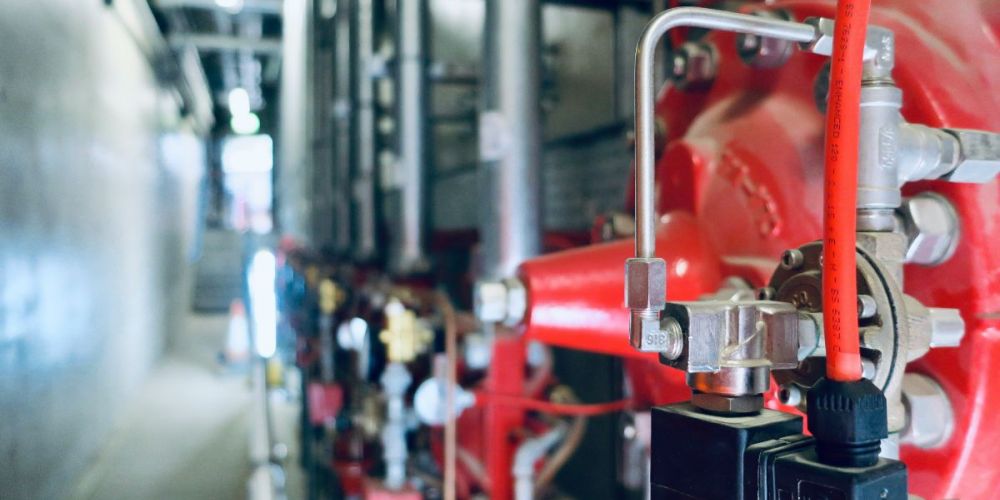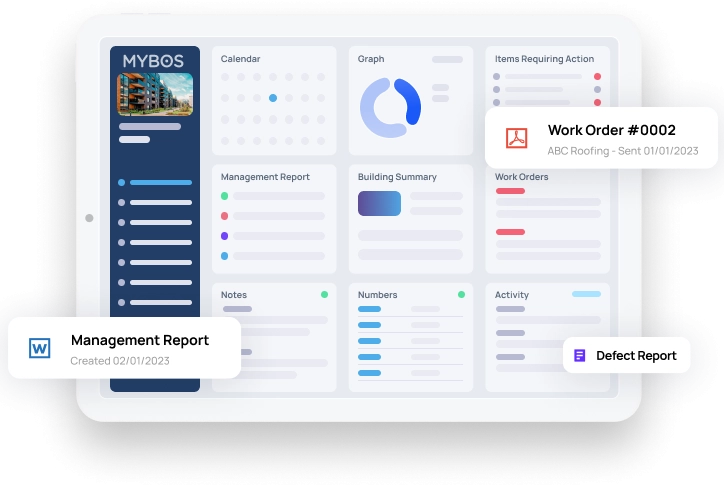
Fire Safety Compliance for Residential Buildings: What You Need to Know in 2025
Keeping residential buildings compliant with updated fire safety regulations for apartments is more than a legal responsibility, it’s a critical part of risk management and occupant safety.
In 2025, fire safety compliance standards in Australia are tightening, with new updates from the Australian Building Codes Board (ABCB), growing emphasis on proactive maintenance, and expanded landlord obligations under state legislation. According to Sourceable, Australia’s building code is set for substantial change in the 2025 National Construction Code update, which will enforce stricter standards around fire safety systems and proactive maintenance in residential developments.
This guide breaks down what you need to know about residential building fire safety in 2025, with a focus on practical checklists, system upgrades, and how to prepare for audits.
Why Fire Safety Compliance Is More Important Than Ever
Beyond preventing disaster, updated fire safety compliance 2025 standards are designed to:
- Ensure occupants have safe and timely escape routes
- Minimise fire spread with structural safeguards
- Protect vulnerable residents in multi-storey and strata buildings
A compliant building isn’t just a legal asset, it’s a reassurance to tenants and a value booster for owners. Non-compliance, on the other hand, can result in substantial fines, reputational damage, and even criminal liability.
Fire Safety Standards Australia 2025: Key Updates
The National Construction Code 2025 (NCC) Fire Safety Guidelines bring enhanced clarity on building fire safety. Some highlights include:
- Tighter regulations around smoke alarm regulations for residential buildings
- Mandatory interconnected alarms in all bedrooms and hallways
- Enhanced documentation requirements for fire risk assessments for residential properties
- Updates to sprinkler design standards for buildings over three storeys
If you’re overseeing regular property inspections, see our blog on Managing Routine Inspections Stress-Free to align your reporting practices with these requirements.
Creating a Fire Compliance Checklist for Buildings
Creating a fire compliance checklist is a critical step in ensuring your building meets safety regulations and is prepared for emergencies. A well-structured checklist helps building and facility managers stay on top of routine inspections, legal obligations, and potential risks. It also ensures all fire safety systems are maintained, tested, and ready to protect occupants when it matters most.
Here’s a practical fire compliance checklist for buildings to help you prepare:
1. Smoke Alarms
Smoke alarms are the first line of defence in the event of a fire, giving occupants early warning and time to evacuate safely. All smoke alarms should be:
- Interconnected and photoelectric: Ensure alarms are interconnected so when one sounds, all do. Use photoelectric alarms as they are more effective at detecting fires.
- Installed in every bedroom and hallway: Regularly inspect for proper placement and test functionality during routine maintenance.
Tip for Building Managers: Create a digital log to track installation dates, battery replacements, and compliance inspections across all units.
2. Fire Doors
Fire doors are designed to slow the spread of fire and smoke, providing critical time for safe evacuation. Fire doors must have the following features:
- Self-closing and unobstructed: Check that doors close automatically and fully, without wedges or obstructions.
- Correct signage and seals in place: Inspect for correct “Fire Door—Do Not Obstruct” signage and ensure intumescent seals are intact.
Tip for Building Managers: Conduct quarterly checks on all fire doors, and train cleaning staff and contractors not to tamper with door functionality.
3. Sprinkler Systems
Sprinkler systems are essential for suppressing fires quickly before they spread and cause significant damage. Any sprinkler systems should be:
- Professionally maintained and tested: Engage a licensed fire safety contractor to perform routine checks.
- Compliant with AS 2118.1 (Australian Standard): Ensure your system meets the design, installation, and maintenance standards required under Australian law.
Tip for Building Managers: Schedule and document annual pressure tests and service reports in your facility management software to stay audit-ready.
4. Emergency Exit Lighting
Emergency lighting ensures that residents can safely exit a building even if power fails during an emergency. Emergency lighting and signage should always keep:
- Tested every 6 months: Follow mandatory testing intervals and replace faulty lights immediately.
- Exit pathways clear at all times: Keep stairwells and corridors free of clutter and properly lit.
Tip for Building Managers: Assign a monthly walk-through checklist to staff, to inspect emergency lighting and remove any obstructions from exit routes.
5. Fire Evacuation Plans
An effective evacuation plan saves lives by providing clear guidance during a fire emergency. Evacuation and emergency response plans should include:
- Up-to-date, visible, and accessible: Post plans on every floor and in common areas. Update them when layouts or emergency contacts change.
- Practice drills conducted annually: Ensure all occupants are familiar with procedures and know where to go.
Tip for Building Managers: Collaborate with local fire services to run annual evacuation drills, and include your building residents and staff in training sessions.
Using a preventative approach to inspections and maintenance can make all the difference. Read How to Successfully Manage Preventative Maintenance in Your Building for more guidance.
Building Fire Safety Obligations for Strata
If you’re managing a strata property, strata building fire safety obligations will typically sit with the Owners Corporation (or Body Corporate) and include:
- Keeping common areas free of obstructions
- Maintaining emergency exits and access
- Hiring qualified contractors for inspections
- Documenting and retaining fire maintenance records
State-based laws differ. In NSW, the Fire Safety Statement must be submitted annually. In Queensland, fire and evacuation plans must be updated every 12 months or when a building change occurs.
Data from the Facility Management Association recommends that maintaining fire safety compliance in strata settings requires a structured, proactive approach. The guide highlights the importance of regular inspections, engagement with licensed professionals, and clear documentation, all of which are essential responsibilities of the Owners Corporation to ensure both regulatory compliance and occupant safety.
Fire Safety Responsibilities for Landlords
For individual unit owners leasing out apartments, landlord fire safety responsibilities include:
- Ensuring working smoke alarms on every lease renewal
- Providing tenants with fire safety and evacuation information
- Making sure all compliance certificates are up to date
Neglecting these obligations could lead to disputes, fines, or tenant injuries. A report from ABC News Australia highlights that landlords in Queensland are now required, as of January 2022, to ensure smoke alarms are compliant and tested prior to every new or renewed lease. The law has been strictly enforced following a 2023 fire, prompting authorities to urge property owners to check that their smoke alarms are meeting legislative requirements.
In high-risk environments, routine building inspections are vital. See Why Regular Building Inspections Are Critical for Property Managers for tips to stay on top of reporting cycles.
Multi-Residential Fire Protection Systems: Best Practices
In multi-residential buildings, fire protection systems must be robust, interconnected, and responsive to protect large numbers of occupants across multiple dwellings. Best practices go beyond basic compliance—they ensure early detection, rapid communication, and coordinated emergency response. Effective multi-residential fire protection systems should always include:
- Centralised alarm and communication systems
- Zoned detection and suppression
- Real-time alerts via building management platforms
Preparing for a fire safety audit is an essential part of maintaining compliance in multi-residential buildings. Auditors will assess both the physical systems in place and the documentation that proves they’re properly maintained and compliant.
When preparing for a fire safety audit, assessors will look for:
- Proof of smoke alarm compliance
- Maintenance logs for sprinklers and fire doors
- Current evacuation plans
- Test reports for emergency lighting
- Evidence of staff or tenant fire safety training
FacilitiesNet highlights that effective fire protection in multi-residential buildings relies on a balanced mix of centralised alarms, sprinklers, and fire-rated barriers, ideally integrated into a unified system for real-time monitoring and streamlined maintenance. Integrated building software solutions offer superior coverage and fast response capabilities. Building managers should consider investing in platform tools that help log, track, and remind you of compliance-related tasks.
Staying Compliant in a Shifting Regulatory Environment
With fire safety laws tightening across Australia, particularly for residential and multi-occupancy buildings, proactive planning is your strongest line of defense. From interconnected alarms to updated evacuation plans and well-documented maintenance logs, compliance isn’t just about passing inspections, it’s about protecting lives.
As we move further into 2025, expect more digital audits, increased emphasis on cloud-stored documentation, and tech-enabled compliance tools that integrate with your existing systems.
Need help streamlining your building compliance? Book a demo to discover how MYBOS can support your fire safety, inspection tracking, and preventative maintenance all in one central platform.




